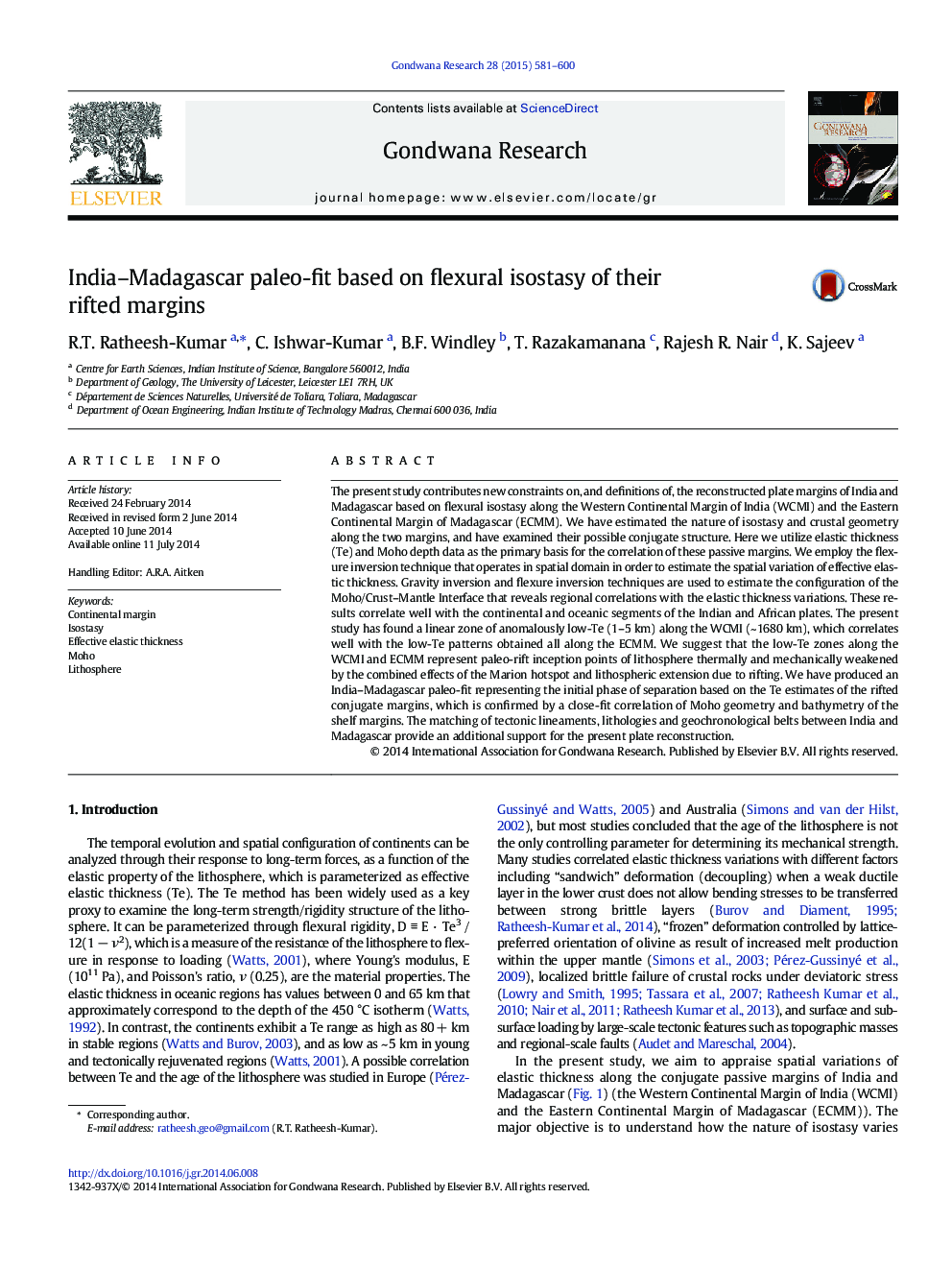| Article ID | Journal | Published Year | Pages | File Type |
|---|---|---|---|---|
| 4726877 | Gondwana Research | 2015 | 20 Pages |
•Elastic thickness and Moho configuration of India–Madagascar conjugate margins•Conjugate zones with similar elastic thickness estimates were correlated and matched.•Paleo-fit reconstruction is justified by fit of tectonic lineaments and litho-units.
The present study contributes new constraints on, and definitions of, the reconstructed plate margins of India and Madagascar based on flexural isostasy along the Western Continental Margin of India (WCMI) and the Eastern Continental Margin of Madagascar (ECMM). We have estimated the nature of isostasy and crustal geometry along the two margins, and have examined their possible conjugate structure. Here we utilize elastic thickness (Te) and Moho depth data as the primary basis for the correlation of these passive margins. We employ the flexure inversion technique that operates in spatial domain in order to estimate the spatial variation of effective elastic thickness. Gravity inversion and flexure inversion techniques are used to estimate the configuration of the Moho/Crust–Mantle Interface that reveals regional correlations with the elastic thickness variations. These results correlate well with the continental and oceanic segments of the Indian and African plates. The present study has found a linear zone of anomalously low-Te (1–5 km) along the WCMI (~1680 km), which correlates well with the low-Te patterns obtained all along the ECMM. We suggest that the low-Te zones along the WCMI and ECMM represent paleo-rift inception points of lithosphere thermally and mechanically weakened by the combined effects of the Marion hotspot and lithospheric extension due to rifting. We have produced an India–Madagascar paleo-fit representing the initial phase of separation based on the Te estimates of the rifted conjugate margins, which is confirmed by a close-fit correlation of Moho geometry and bathymetry of the shelf margins. The matching of tectonic lineaments, lithologies and geochronological belts between India and Madagascar provide an additional support for the present plate reconstruction.
Graphical abstractFigure optionsDownload full-size imageDownload as PowerPoint slide
